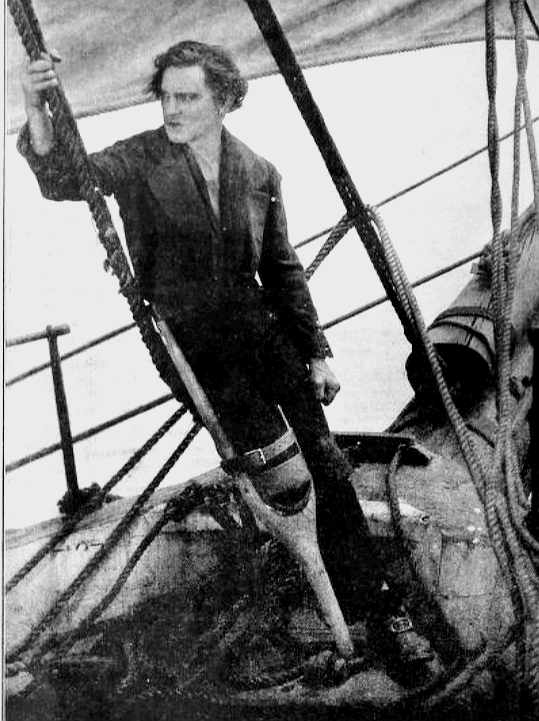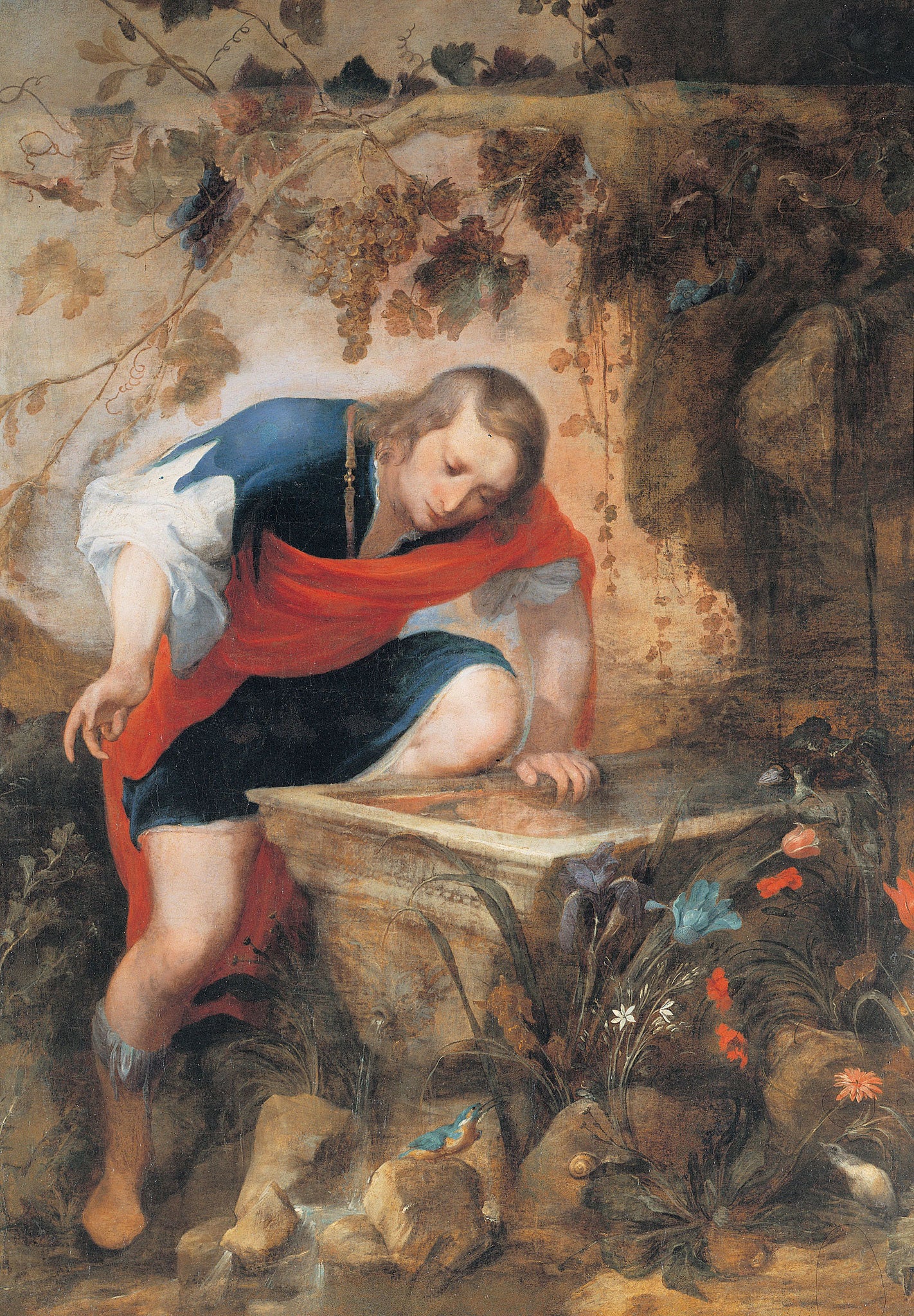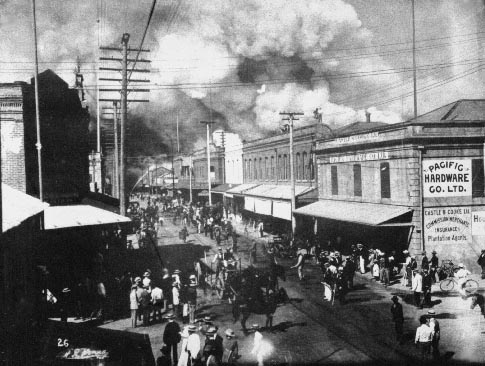|
Captain Ahab
Captain Ahab is a fictional character and one of the protagonists in Herman Melville's ''Moby-Dick'' (1851). He is the monomaniacal captain of the whaling ship '' Pequod''. On a previous voyage, the white whale Moby Dick bit off Ahab's leg and he now wears a prosthetic leg made out of ivory. The whaling voyage of ''Pequod'' ends up as a hunt for revenge on the whale, as Ahab forces the crew members to support his fanatical mission. When Moby Dick is finally sighted, Ahab's hatred robs him of all caution, and the whale drags him to his death beneath the sea and sinks ''Pequod''. Melville biographer Andrew Delbanco calls Ahab "a brilliant personification of the very essence of fanaticism". Scholar F. O. Matthiessen calls attention to the fact that Ahab is called an "ungodly god-like man". Ahab's "tragedy is that of an unregenerate will" whose "burning mind is barred out from the exuberance of love" and argues that he "remains damned". Writer D. H. Lawrence felt little sympathy ... [...More Info...] [...Related Items...] OR: [Wikipedia] [Google] [Baidu] [Amazon] |
Moby-Dick
''Moby-Dick; or, The Whale'' is an 1851 Epic (genre), epic novel by American writer Herman Melville. The book is centered on the sailor Ishmael (Moby-Dick), Ishmael's narrative of the maniacal quest of Captain Ahab, Ahab, captain of the whaler, whaling ship ''Pequod (Moby-Dick), Pequod'', for vengeance against Moby Dick (whale), Moby Dick, the giant white sperm whale that bit off his leg on the ship's previous voyage. A contribution to the literature of the American Renaissance (literature), American Renaissance, ''Moby-Dick'' was published to mixed reviews, was a commercial failure, and was out of print at the time of the author's death in 1891. Its reputation as a Great American Novel was established only in the 20th century, after the 1919 centennial of its author's birth. William Faulkner said he wished he had written the book himself, and D. H. Lawrence called it "one of the strangest and most wonderful books in the world" and "the greatest book of the sea ever written". It ... [...More Info...] [...Related Items...] OR: [Wikipedia] [Google] [Baidu] [Amazon] |
Cape Horn
Cape Horn (, ) is the southernmost headland of the Tierra del Fuego archipelago of southern Chile, and is located on the small Hornos Island. Although not the most southerly point of South America (which is Águila Islet), Cape Horn marks the northern boundary of the Drake Passage and marks where the Atlantic and Pacific Oceans meet. Cape Horn was identified by mariners and first rounded in 1616 by the Dutchmen Willem Schouten and Jacob Le Maire, who named it after the city of Hoorn in the Netherlands. For decades, Cape Horn was a major milestone on the clipper route, by which sailing ships carried trade around the world. The waters around Cape Horn are particularly hazardous, owing to strong winds, large waves, strong currents and icebergs. The need for boats and ships to round Cape Horn was greatly reduced by the opening of the Panama Canal in August 1914. Sailing around Cape Horn is still widely regarded as one of the major challenges in yachting. Thus, a few recreational ... [...More Info...] [...Related Items...] OR: [Wikipedia] [Google] [Baidu] [Amazon] |
King Lear
''The Tragedy of King Lear'', often shortened to ''King Lear'', is a Shakespearean tragedy, tragedy written by William Shakespeare. It is loosely based on the mythological Leir of Britain. King Lear, in preparation for his old age, divides his power and land between his daughters Goneril and Regan (King Lear), Regan, who pay homage to gain favour, feigning love. The King's third daughter, Cordelia (King Lear), Cordelia, is offered a third of his kingdom also, but refuses to be insincere in her praise and affection. She instead offers the respect of a daughter and is disowned by Lear who seeks flattery. Regan and Goneril subsequently break promises to host Lear and his entourage, so he opts to become homeless and destitute, and goes insane. The French King married to Cordelia then invades Britain to restore order and Lear's rule. In a subplot, Edmund, the illegitimate son of the Earl of Gloucester, betrays his brother and father. Tragically, Lear, Cordelia and several other main ... [...More Info...] [...Related Items...] OR: [Wikipedia] [Google] [Baidu] [Amazon] |
Charles Olson
Charles John Olson (27 December 1910 – 10 January 1970) was a second generation modernist United States poetry, American poet who was a link between earlier Literary modernism, modernist figures such as Ezra Pound and William Carlos Williams and the third generation modernist The New American Poetry 1945-1960, New American poets. The latter includes the New York School (art), New York School, the Black Mountain poets, Black Mountain School, and some of the artists and poets associated with the Beat generation and the San Francisco Renaissance. Today, Olson remains a central figure of the Black Mountain Poetry school and is generally considered a key figure in moving American poetry from modernism to postmodernism. In these endeavors, Olson described himself not so much as a poet or a historian but as "an archeologist of morning."In the preceding citation, Elyssa East quotes Olson: “The trouble is,” Olson admitted at the end of ''Mayan Letters'', “it is very difficult, to b ... [...More Info...] [...Related Items...] OR: [Wikipedia] [Google] [Baidu] [Amazon] |
Hearse
A hearse () is a large vehicle, originally a horse carriage but later with the introduction of motor vehicles, a car, used to carry the body of a deceased person in a coffin to a funeral, wake, or graveside service. They range from deliberately anonymous vehicles to heavily decorated vehicles. In the funeral trade of some countries hearses are called funeral cars or funeral coaches. History The name is derived, through the French herse, from the Latin , which means a Harrow (tool), harrow. The funeral hearse was originally a wooden or metal framework, which stood over the bier or coffin and supported the Pall (funeral), pall. It was provided with numerous spikes to hold burning candles, and, owing to the resemblance of these spikes to the teeth of a harrow, was called a hearse. Later on, the word was applied, not only to the construction above the coffin, but to any receptacle in which the coffin was placed. Thus from about 1650Oxford English Dictionary Online accessed 26 Janua ... [...More Info...] [...Related Items...] OR: [Wikipedia] [Google] [Baidu] [Amazon] |
Zoroastrianism
Zoroastrianism ( ), also called Mazdayasnā () or Beh-dīn (), is an Iranian religions, Iranian religion centred on the Avesta and the teachings of Zoroaster, Zarathushtra Spitama, who is more commonly referred to by the Greek translation, Zoroaster ( ). Among the world's oldest organized faiths, its adherents exalt an Creator deity, uncreated, Omnibenevolence, benevolent, and List of knowledge deities#Persian mythology, all-wise deity known as Ahura Mazda (), who is hailed as the supreme being of the universe. Opposed to Ahura Mazda is Ahriman, Angra Mainyu (), who is personified as a List of death deities#Persian-Zoroastrian, destructive spirit and the adversary of all things that are good. As such, the Zoroastrian religion combines a Dualism in cosmology, dualistic cosmology of good and evil with an eschatological outlook predicting the Frashokereti, ultimate triumph of Ahura Mazda over evil. Opinions vary among scholars as to whether Zoroastrianism is monotheistic, polyth ... [...More Info...] [...Related Items...] OR: [Wikipedia] [Google] [Baidu] [Amazon] |
Parsis
The Parsis or Parsees () are a Zoroastrian ethnic group in the Indian subcontinent. They are descended from Persian refugees who migrated to the Indian subcontinent during and after the Arab-Islamic conquest of Iran in the 7th century, when Zoroastrians were persecuted by the early Muslims. Representing the elder of the Indian subcontinent's two Zoroastrian communities, the Parsi people are culturally, linguistically, and socially distinct from the Iranis, whose Zoroastrian ancestors migrated to British-ruled India from Qajar-era Iran. The word ''Parsi'' is derived from the Persian language, and literally translates to ''Persian'' ().Parsee, n. and adj. – Oxford English Dictionary . oed.com. Retrieved on 2015-03-03. According to the 16th-century Parsi epic '' [...More Info...] [...Related Items...] OR: [Wikipedia] [Google] [Baidu] [Amazon] |
Books Of Kings
The Book of Kings (, ''Sefer (Hebrew), Sēfer Malik, Məlāḵīm'') is a book in the Hebrew Bible, found as two books (1–2 Kings) in the Old Testament of the Christian Bible. It concludes the Deuteronomistic history, a history of ancient Israel also including the books of Book of Joshua, Joshua, Book of Judges, Judges, and Books of Samuel, Samuel. Biblical commentators believe the Books of Kings mixes legends, folktales, miracle stories and "fictional constructions" in with the annals for the purpose of providing a Theology, theological explanation for the Siege of Jerusalem (587 BC), destruction of the Kingdom of Judah by Babylon in c. 586 BC and to provide a foundation for a return from Babylonian captivity, Babylonian exile.Sweeney, p1/ref> The two books of Kings present a history of ancient Israel and Judah, from the death of King David to the release of Jehoiachin from imprisonment in Babylon—a period of some 400 years (). Scholars tend to treat the books as cons ... [...More Info...] [...Related Items...] OR: [Wikipedia] [Google] [Baidu] [Amazon] |
Ahab
Ahab (; ; ; ; ) was a king of the Kingdom of Israel (Samaria), the son and successor of King Omri, and the husband of Jezebel of Sidon, according to the Hebrew Bible. He is depicted in the Bible as a Baal worshipper and is criticized for causing moral decline in Israel, though modern scholars argue that Ahab was a Yahwist himself. The existence of Ahab is historically supported outside the Bible. The contemporary Kurkh Monolith inscription of king Shalmaneser III from the Neo-Assyrian Empire documented in 853 BC that Shalmaneser III defeated an alliance of a dozen kings in the Battle of Qarqar; one of these was Ahab. Though not named, he is also mentioned on the inscriptions of the Mesha Stele. Ahab became king of Israel in the thirty-eighth year of King Asa of Judah, and reigned for twenty-two years, according to 1 Kings 16:29. William F. Albright dated his reign to 869–850 BC, while Edwin R. Thiele offered the dates 874–853 BC. Most recently, Michael Coogan has dated ... [...More Info...] [...Related Items...] OR: [Wikipedia] [Google] [Baidu] [Amazon] |
Narcissus (mythology)
In Greek mythology, Narcissus (; ) is a hunter from Thespiae in Boeotia (alternatively Karaburun, Mimas or modern-day Karaburun, İzmir Province, Izmir), known for his beauty which was noticed by all. According to the best-known version of the story in Ovid, Ovid's ''Metamorphoses'', Narcissus rejected the advances of all women and men who approached him, instead falling in love with his own reflection in a pool of water. In some versions, he beat his breast purple in agony at being kept apart from this reflected love, and in his place sprouted narcissus (plant), a flower bearing his name. The character of Narcissus is the origin of the term narcissism, a self-centered personality style. This quality in extreme contributes to the definition of narcissistic personality disorder, a psychiatric condition marked by grandiosity, excessive need for attention and admiration, and an impaired ability to empathy, empathize. Etymology The name Narcissus is of Greek etymology. According ... [...More Info...] [...Related Items...] OR: [Wikipedia] [Google] [Baidu] [Amazon] |
Honolulu
Honolulu ( ; ) is the List of capitals in the United States, capital and most populous city of the U.S. state of Hawaii, located in the Pacific Ocean. It is the county seat of the Consolidated city-county, consolidated City and County of Honolulu County, Hawaii, Honolulu, situated along the southeast coast of the island of Oahu, Oʻahu, and is the westernmost and southernmost major U.S. city as well as westernmost and southernmost U.S. state capital. It is also a major hub for business, finance, hospitality, and military defense in both the state and Oceania. The city is characterized by a mix of various Asian culture, Asian, Western culture, Western, and Oceanian culture, Pacific cultures, reflected in its diverse demography, cuisine, and traditions. is Hawaiian language, Hawaiian for "sheltered harbor" or "calm port"; its old name, , roughly encompasses the area from Nuʻuanu Avenue to Alakea Street and from Hotel Street to Queen Street, which is the heart of the present dow ... [...More Info...] [...Related Items...] OR: [Wikipedia] [Google] [Baidu] [Amazon] |
United States Exploring Expedition
The United States Exploring Expedition of 1838–1842 was an exploring and surveying expedition of the Pacific Ocean and surrounding lands conducted by the United States. The original appointed commanding officer was Commodore Thomas ap Catesby Jones. Funding for the original expedition was requested by President John Quincy Adams in 1828; however, Congress would not implement funding until eight years later. In May 1836, the oceanic exploration voyage was finally authorized by Congress and created by President Andrew Jackson. The expedition is sometimes called the U.S. Ex. Ex. for short, or the Wilkes Expedition in honor of its next appointed commanding officer, United States Navy Lieutenant Charles Wilkes. The expedition was of major importance to the growth of science in the United States, in particular the then-young field of oceanography. During the event, armed conflict between Pacific islanders and the expedition was common and dozens of natives were killed in action ... [...More Info...] [...Related Items...] OR: [Wikipedia] [Google] [Baidu] [Amazon] |










